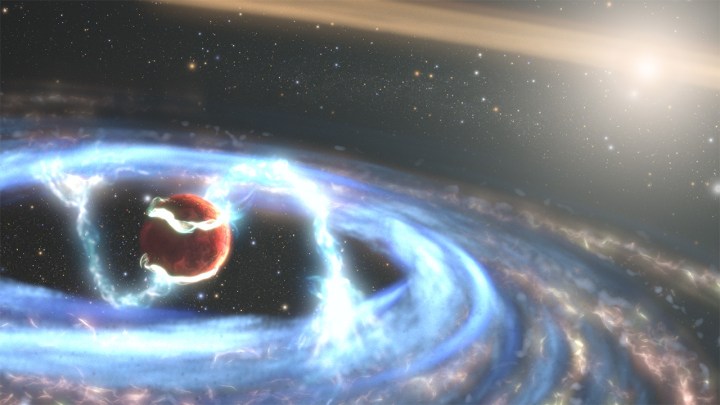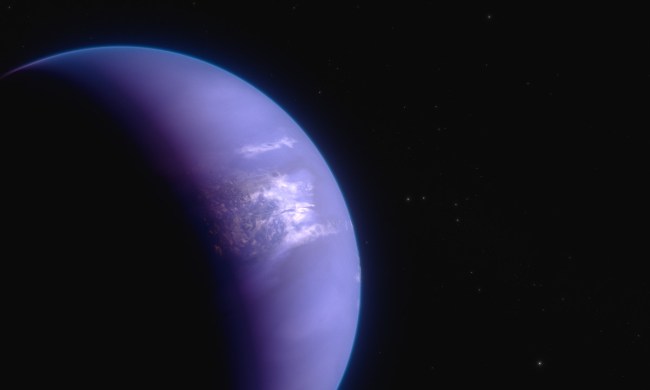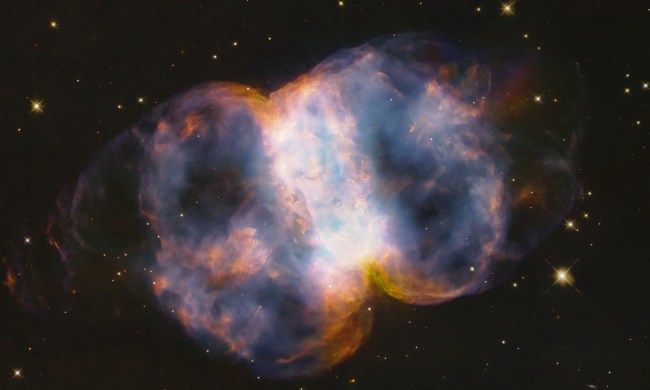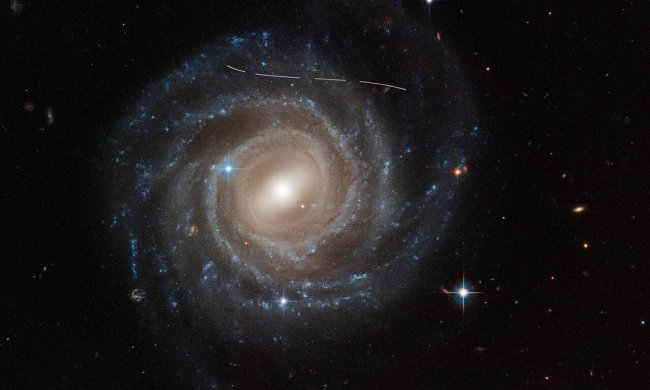
Planets come in many compositions and sizes, and they can grow considerably larger than even the gas giants in our solar system. One such giant planet, PDS 70b, is two to three times the radius of Jupiter, and around three times its mass as well. Now, Hubble has made a rare direct observation of this planet to learn about how such large planets grow.
The planet’s host star, orange dwarf PDS 70, is located 370 light-years away in the constellation of Centaurus, and this is one of the relatively few systems in which a planet has been directly imaged. Most of the time, exoplanets are detected by seeing how light coming from their host star changes, from which the presence of planets can be inferred. But occasionally, a planet is big enough to be seen directly, like the chunky PDS 70b.
Not only could Hubble observe the planet, but it could also see how fast it grows by observing radiation from hot gas which is falling toward it. The planet is moving through a cloud of dust and gas around the star, and it gathers up material as it travels. The researchers believe that although the planet is still growing, it will soon come to the end of its growth phase.
“We just don’t know very much about how giant planets grow,” said one of the researchers, Brendan Bowler of the University of Texas at Austin, in a statement. “This planetary system gives us the first opportunity to witness material falling onto a planet. Our results open up a new area for this research.”
“This system is so exciting because we can witness the formation of a planet,” said another researcher, Yifan Zhou, also of the University of Texas at Austin. “This is the youngest bona fide planet Hubble has ever directly imaged.”
Learning about how this planet is growing can also teach us about how planets like Jupiter formed in our solar system. It too may have grown by scooping up material from a disk of dust and gas.
“Thirty-one years after launch, we’re still finding new ways to use Hubble,” Bowler said. “Yifan’s observing strategy and post-processing technique will open new windows into studying similar systems, or even the same system, repeatedly with Hubble. With future observations, we could potentially discover when the majority of the gas and dust falls onto their planets and if it does so at a constant rate.”



